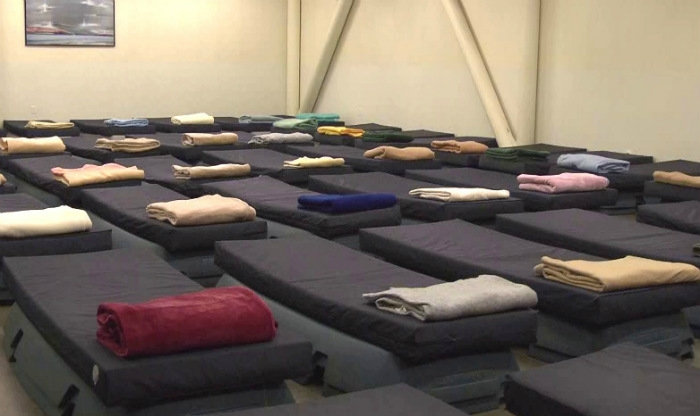
Author: Gary Ferguson
Opinion: Michael Fredericks
Published May 3 by the Anchorage Daily News
Homelessness is a shared problem in our communities across the state of Alaska. Together, we need to support and expand on solutions that work, to invest in the future of our state.
The four critical public safety programs that provide homeless services were all eliminated in the governor’s proposed budget, but thankfully they were restored in the Senate budget last week. These four programs, in combination with philanthropic donations, support basic emergency shelter and transitional housing, support services to help people move to permanent housing, and prevention services to keep families from becoming homeless. In a climate like Alaska’s, these are critical public services. Without these services, communities would see an increase in unauthorized camps, an increase in the usage of expensive police and emergency services, as well as a shared decrease in our quality of life.
Without state dollars, there will be shelters and transitional housing that cannot remain open statewide. In Anchorage, almost 200 emergency shelter beds would be lost starting July 1. That is 200 men, women and children on the street without a place to stay. In many rural communities, these cuts would result in the sole homelessness resource in the community being eliminated. This would cause a 100% increase in homelessness in much of rural Alaska and increase migration of our populations facing a housing crisis to urban areas, which are already overloaded.
Investing in homeless services make sense. Currently, there are 520 permanent supportive housing beds supported by state funds. They are designated for vulnerable people who need housing and support because of disability. Nationally, the average annual cost of a person with physical and mental disabilities experiencing homeless is $35,578. The combined amount of funding the state of Alaska puts toward all homelessness efforts is far outweighed by the more than $20 million dollars of costs that would accumulate by having all those vulnerable people on our streets – that is money saved.
Data collected from all our existing efforts demonstrate that Alaskans are moving out of homelessness and into permanent housing with these state-funded services. For example, since 2017, 89% of people who received these homeless services and have successfully moved to housing, did not return to homelessness. In 2018, 97% of people who received support through state funds to prevent homelessness, never even entered our shelter system. They did not become homeless, so costly and resource-intensive alternatives like emergency services and hospital stays were avoided. There are solutions that are working and removing those solutions would hurt individuals and cost communities.
Statewide, homeless services are provided almost entirely by a network of nonprofit providers. These nonprofit groups are well-equipped to handle and serve our vulnerable community members challenged with homelessness, and the results speak for themselves. Nonprofit providers use state funds to leverage other dollars, largely donation dollars, from committed individuals and organizations in our communities. Reducing state funding would jeopardize existing services and our nonprofit’s ability to bring in other grants and funding. For example, Covenant House Alaska, the largest agency supporting youth and children experiencing homelessness, matches every dollar granted by the state to $10 of additional funding. The hospital partnership at Brother Francis Shelter, which includes the three major hospitals in Anchorage, has saved our community more than $2 million in one year, for a cost of less than $350,000. That return on investment is indicative of all the services offered by nonprofit organizations in this field across the state; they have always done the most possible with the least amount of resources. There is no further reduction that can be made.
Our providers statewide are strong, but our system is fragile and could collapse under these budget cuts. It is certain, though, that the problem of homelessness will not go away. It will just be diverted into other state-funded systems. Nationwide, a lack of affordable housing resources and homeless services is directly linked to increased use of emergency services, corrections, institutional stays and high-cost medical services.
In closing, please know that homeless services are critical to our state, because people experiencing homelessness are no different from you or me, and all of us have needed help along the way. They have parents and children, they want to be safe, and connect with their community. Sometimes they are struggling with issues, like loss of a job, their physical health or addiction, just like so many others we all know. They are Alaskans, just like us, and all people in our state deserve basic health and safety. To all those in our government making tough decisions about our budget, please make the right choice for the health and safety of all in our communities.
Michael Fredericks is president and majority owner of SALT, an architectural and design firm located in downtown Anchorage. SALT is a catalyst for transformation, using strategic engagement and visionary design, to create environments for generations to thrive. SALT, formerly RIM Design + RIM First People, is a Native-owned, woman-owned small business. Away from the office, Michael lends her strategic thinking as a connector and community activator. Michael’s proudest accomplishment is the family she has created and the eclectic group that calls her mom.
Dr. Gary Ferguson is a licensed naturopathic doctor living in Anchorage. For the past 17 years, Dr. Ferguson has worked across Alaska to address the social, economic, cultural and environmental factors that contribute to the health, well-being of Alaskans.